Hacking and Moding ASUS WL500G Premium
Here came the time, and made it long conceived. Needless to say that this router is simply legendary and there are large communities of fans of this piece of iron on the Internet. In this revision, the Soldering station Lukey702 helped me a lot .
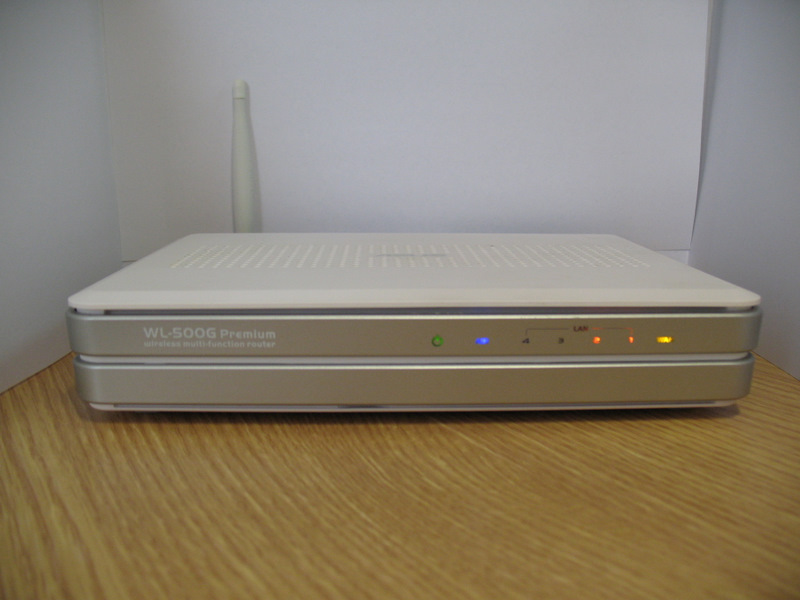
Let's start with hacking:
1. Installing 128MB memory. About this already on Habré is written, we will not stop, here is the result:
')

2. Installing cooling radiators. We put radiators on 2 chips, on Broadcom BCM5325EKQMG responsible for Fast Ethernet switching and on Broadcom BCM4780 CPU (in the photo is my first experimental router).

For this, I made the radiators myself, sawing Dremel so big:
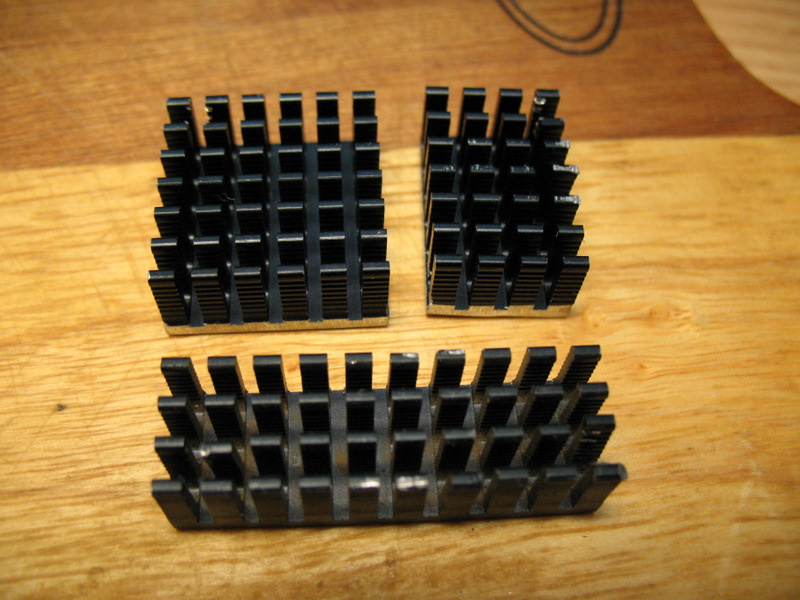
To install (glue) the radiator, you need to put a thermal interface on the chip (always use KPT-8) and on the edges of the chip, using a toothpick to “drop” quite a bit of Moment glue (I use Moment-Crystal) and press the radiator . I do not recommend using ALSIL-5, because It does not provide such a good "thermal contact" as the usual KPT-8, and 90% of the fake or already dried ones are sold in stores. I tried to buy this glue 3 times, got “normal” once, glued the necessary part, and after a week the remaining glue dried, although it was tightly closed. I don’t contact ALSIL-5 anymore and I don’t want to get involved, my way with the Moment glue is much better!

To install the radiator on the processor, you need to cut the window in the lid-screen “Dremel” (sorry for the photo, it didn’t work right away, but I don’t really want to disassemble the device again)
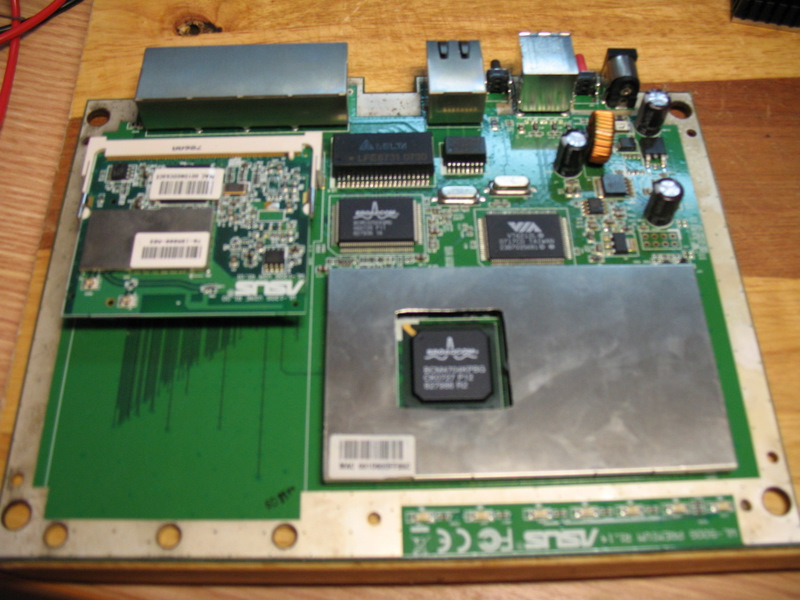
Radiators stuck, proceed to the next step ...
3. Cut the "Dremel" in the body hole for the power switch HDD.
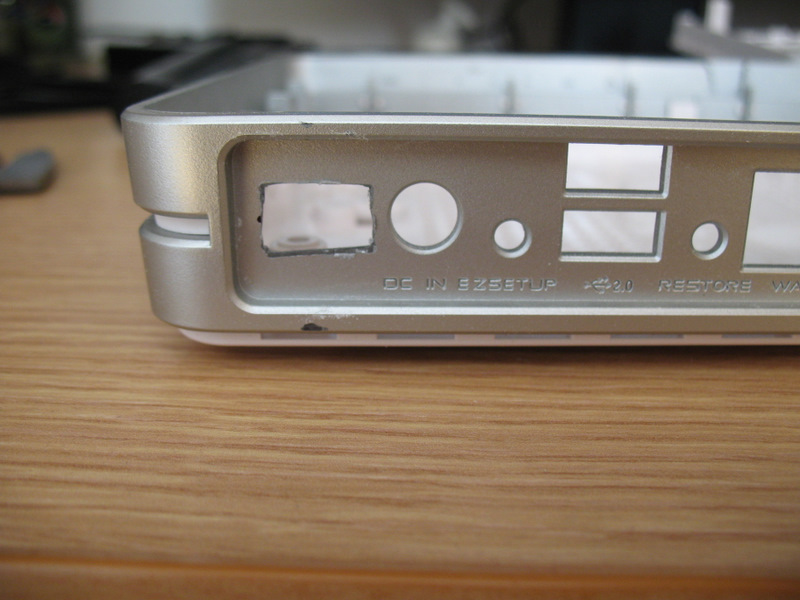
We put the switch

4. Install the HDD inside the case.
We buy a USB-IDE / SATA adapter, or HDD BOX, disassemble, pull out the board, set aside.
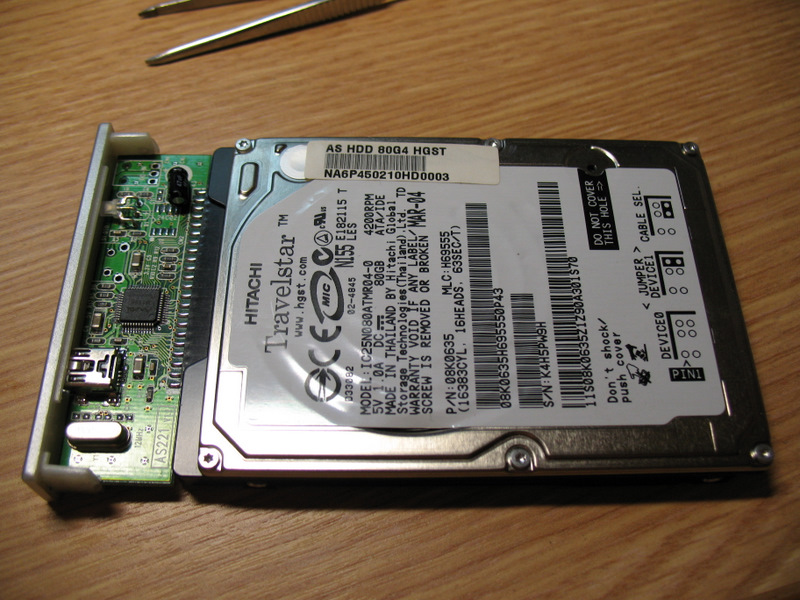
We buy in the hardware store mounting tape, make brackets for the disk, try on the installation in the case and fasten everything with screws. It is fastened to the “standard” holes on the board. ASUS engineers took care of us in advance and drilled holes in the board!

We unpack additional USB, the benefit to PCI USB 2.0 Controller VIA VT6212 is 2 more unplugged free ports.

I soldered one for the disk.
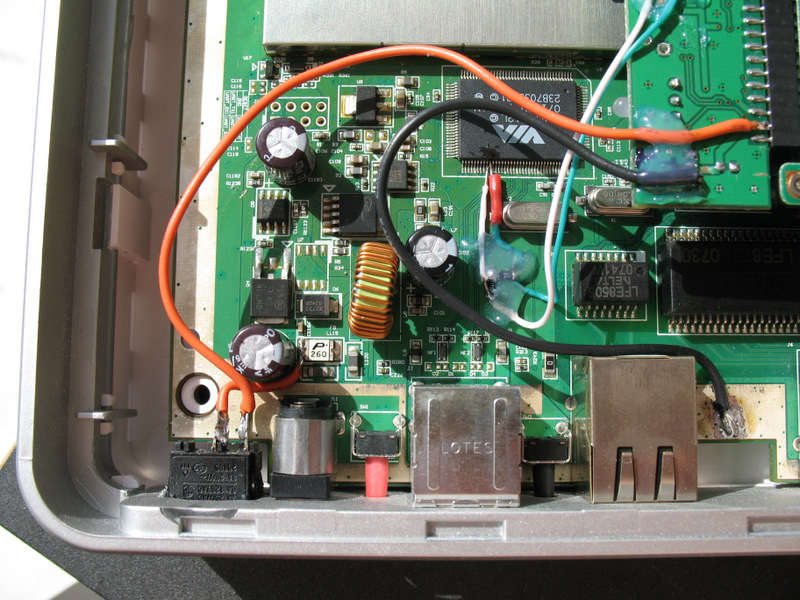
Under the hot melt, 2 SMD resistors in the case of 1206 on 15 kOhm, the USB signal leads are pulled to the "ground".
Power supply + 5V for a disk is taken from the "polisvich" at 2.6A, connected via a switch. We solder all the necessary wires to the USB-IDE / SATA and get
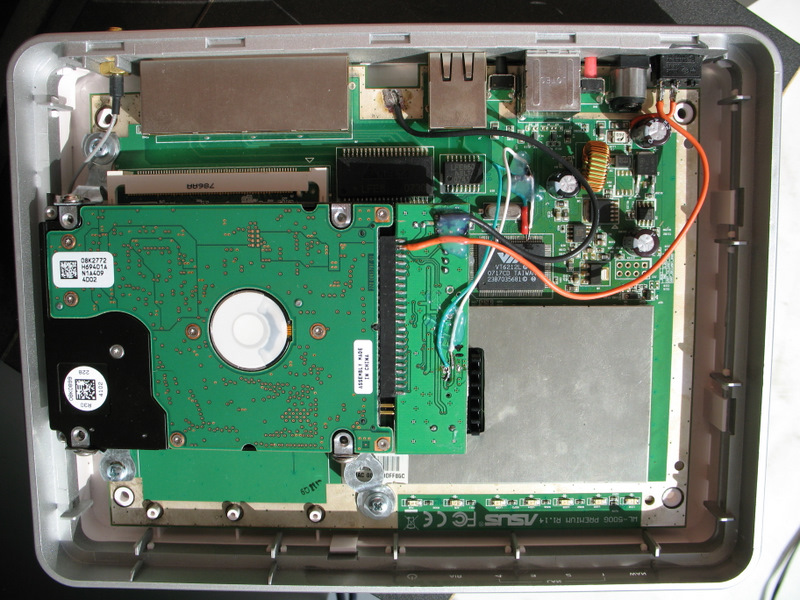
5. Install the cooler. We fasten the cooler 6x6cm to the lid on the screws, the holes in the lid ideally coincide with the mounting holes of the cooler! We cut off the native connector, solder the BLS connector, pull in the heat shrink (this is “mother”), PLS “pins” solder to the USB-IDE / SATA board (this is “dad”). In the photo, the cooler is set to “blown out”, was subsequently turned over, since the impeller rested against the electrolytic capacitor mounted on the board. At the same time we wrap light guides with tape in order to remove parasitic illumination of the housing from the inside with LEDs.

Now we have started modding ...
6. Solder the dull red LEDs to multi-colored. Looking for SMD packages 1206, about 60 mN, so that the brightness was about the same. I took: green on “POWER”, blue on “AIR”, native redhead left on “LAN”, yellow on “WAN”. It is better to solder the light fixtures with two soldering irons at the same time, applying stings to the contacts from two sides and moving sideways, and even better with special tongs. Solder in the router lead-free and very refractory.

7. Cut off the “fake” antenna, the antenna itself takes less than half the length of its body.
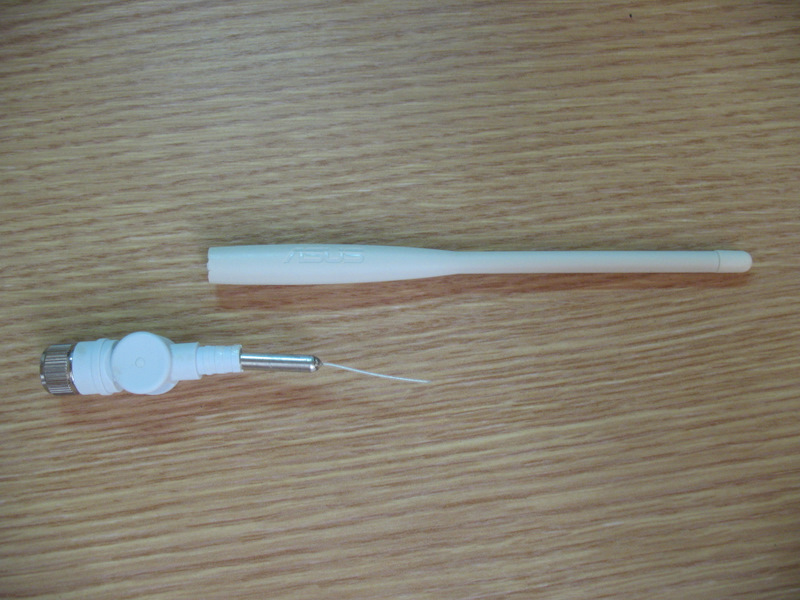
We cut off the cap, it is removed, you do not need to remove it, you just need to cut it off, cut out the middle part, glue the cap in the “joint”, we get a small neat antenna, which no longer interferes.
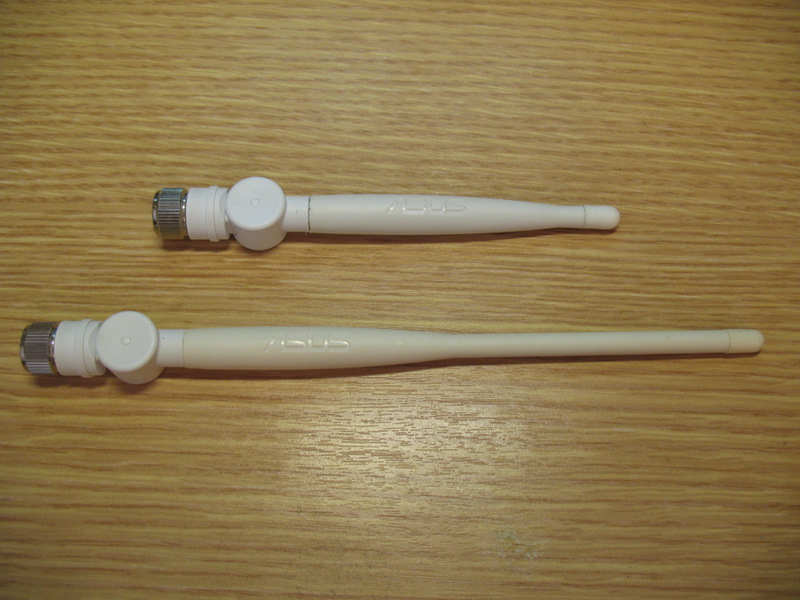
Before the final assembly is obtained such
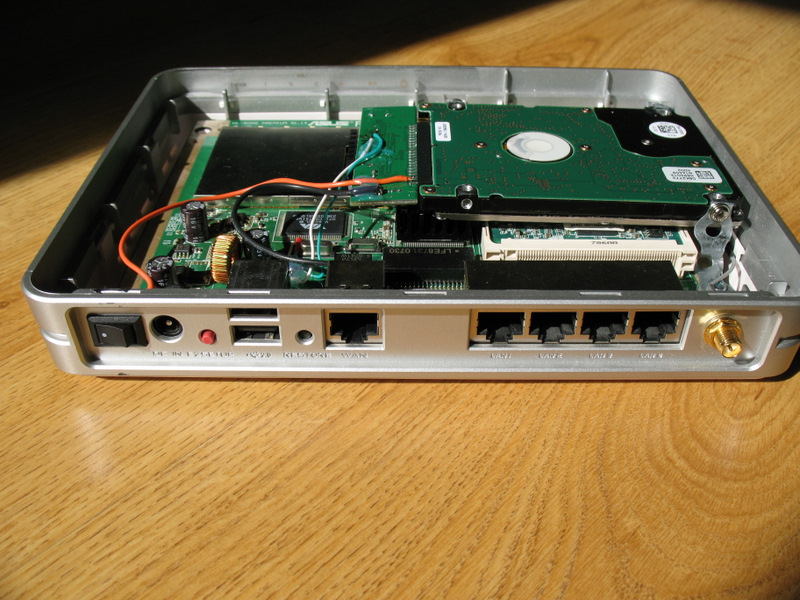
We collect everything and get such a handsome man.
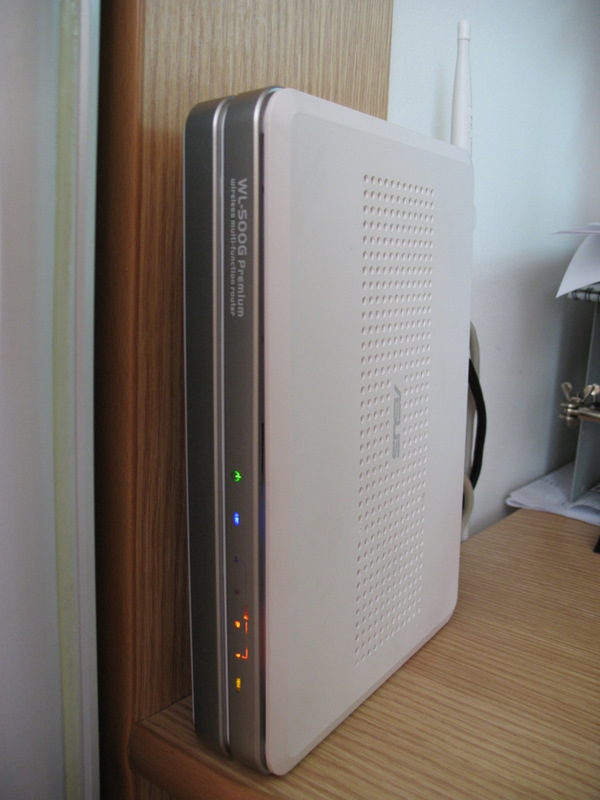
Next, we “overclock” the processor to 300 MHz (this is not exactly overclocking, this is its native frequency), install the necessary services on the router and enjoy life. I have “programs for the kettle” , thanks to these guys and the community!
PS Who this device does not work well or does not start at all, blinking randomly with diodes, first of all, check the power supply !

Let's start with hacking:
1. Installing 128MB memory. About this already on Habré is written, we will not stop, here is the result:
')

2. Installing cooling radiators. We put radiators on 2 chips, on Broadcom BCM5325EKQMG responsible for Fast Ethernet switching and on Broadcom BCM4780 CPU (in the photo is my first experimental router).

For this, I made the radiators myself, sawing Dremel so big:

To install (glue) the radiator, you need to put a thermal interface on the chip (always use KPT-8) and on the edges of the chip, using a toothpick to “drop” quite a bit of Moment glue (I use Moment-Crystal) and press the radiator . I do not recommend using ALSIL-5, because It does not provide such a good "thermal contact" as the usual KPT-8, and 90% of the fake or already dried ones are sold in stores. I tried to buy this glue 3 times, got “normal” once, glued the necessary part, and after a week the remaining glue dried, although it was tightly closed. I don’t contact ALSIL-5 anymore and I don’t want to get involved, my way with the Moment glue is much better!

To install the radiator on the processor, you need to cut the window in the lid-screen “Dremel” (sorry for the photo, it didn’t work right away, but I don’t really want to disassemble the device again)

Radiators stuck, proceed to the next step ...
3. Cut the "Dremel" in the body hole for the power switch HDD.

We put the switch

4. Install the HDD inside the case.
We buy a USB-IDE / SATA adapter, or HDD BOX, disassemble, pull out the board, set aside.

We buy in the hardware store mounting tape, make brackets for the disk, try on the installation in the case and fasten everything with screws. It is fastened to the “standard” holes on the board. ASUS engineers took care of us in advance and drilled holes in the board!

We unpack additional USB, the benefit to PCI USB 2.0 Controller VIA VT6212 is 2 more unplugged free ports.

I soldered one for the disk.

Under the hot melt, 2 SMD resistors in the case of 1206 on 15 kOhm, the USB signal leads are pulled to the "ground".
Power supply + 5V for a disk is taken from the "polisvich" at 2.6A, connected via a switch. We solder all the necessary wires to the USB-IDE / SATA and get

5. Install the cooler. We fasten the cooler 6x6cm to the lid on the screws, the holes in the lid ideally coincide with the mounting holes of the cooler! We cut off the native connector, solder the BLS connector, pull in the heat shrink (this is “mother”), PLS “pins” solder to the USB-IDE / SATA board (this is “dad”). In the photo, the cooler is set to “blown out”, was subsequently turned over, since the impeller rested against the electrolytic capacitor mounted on the board. At the same time we wrap light guides with tape in order to remove parasitic illumination of the housing from the inside with LEDs.

Now we have started modding ...
6. Solder the dull red LEDs to multi-colored. Looking for SMD packages 1206, about 60 mN, so that the brightness was about the same. I took: green on “POWER”, blue on “AIR”, native redhead left on “LAN”, yellow on “WAN”. It is better to solder the light fixtures with two soldering irons at the same time, applying stings to the contacts from two sides and moving sideways, and even better with special tongs. Solder in the router lead-free and very refractory.

7. Cut off the “fake” antenna, the antenna itself takes less than half the length of its body.

We cut off the cap, it is removed, you do not need to remove it, you just need to cut it off, cut out the middle part, glue the cap in the “joint”, we get a small neat antenna, which no longer interferes.

Before the final assembly is obtained such

We collect everything and get such a handsome man.

Next, we “overclock” the processor to 300 MHz (this is not exactly overclocking, this is its native frequency), install the necessary services on the router and enjoy life. I have “programs for the kettle” , thanks to these guys and the community!
PS Who this device does not work well or does not start at all, blinking randomly with diodes, first of all, check the power supply !
Source: https://habr.com/ru/post/90711/
All Articles